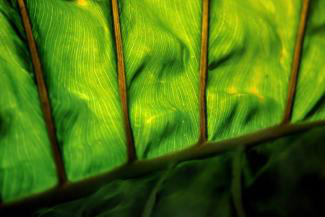Introduction
One of the most surprising and least understood aspects of life is the robustness of the processes involved with respect to disorder and to defects. All living matter is energetically-disordered due to the intrinsic structural disorder of many-atom systems or of complex matter. This disorder is unavoidable and in fact it may even be one of the driving forces for the origin and evolution of life. In Biology, it is seldom mentioned as such, although the dynamic character of macromolecules, macromolecule assemblies and cell compartments is generally recognised. The dynamic disorder of biological matter thus occurs on all timescales, from fem to seconds to minutes or slower. Disorder on fast time scales occurs due to atomic motion around equilibrium positions, slower motions may involve the dynamics of amino acids or parts of a cofactor, even slower motions may involve a large part of the protein, opening up, partly unfolding etc... In more integrated phenomena, like biological processes requiring large protein architectures, it must involve even slower timescales, like disorder in local protein concentrations. It must be noted that every dynamics behaviour must induce a static disorder for every biological process occurring at a faster timescale, and, therefore, every biological process occurs in a landscape disordered from the energetic and conformational point of view.
Background
The first field where this concept was formally introduced is photosynthesis 1,2. During the first steps of this process, the energy of solar photons is absorbed by a light harvesting antenna, composed of many pigment-proteins, and transferred on a femtosecond (10-15 s) to picosecond (10-12 s) timescale to a reaction center. The electronic transitions of the photosynthetic pigment-protein complexes involved this process is largely inhomogeneously broadened, and can be satisfactorily modelled considering the disorder induced by the protein motions occurring in this timescale range. Actually, in this field, the dynamic disorder could be directly observed by experiments carried out at the level of single proteins. In optimal conditions, however, every absorbed photon is used to carry out photosynthesis, meaning that Nature is able to perform a series of 10 to 100 excitation energy steps with a quantum yield close to unity in a disordered energy landscape. Disorder due to macromolecule dynamics was also directly shown by electron microscopy studies. EM has shown that the ribosome, the complex architecture that hosts the translation process in all living cells, in the absence of substrate, dynamically explores all the conformations it adopts after binding a substrate5. A direct consequence of this observation is that, at a given time, some ribosomes will not be in the proper conformation for optimally performing their activity essential for the cellular life.More amazing even are the consequence of disorder at higher integration levels in the cell. Some genes were shown to be stochastically expressed, i.e. that, in a monogenic culture, where all cells are supposed to be exactly the same, they are expressed differently from individual cell to individual cell. It was actually shown that some pathogenic bacteria, like Salmonella use this expression of disorder to optimise their strategy for colonising their host. In the intestine, only 20% of these bacteria will express virulence factors, inducing an inflammatory response of the host. This response actually helps the rest of the colony to colonize the host, while the virulent bacteria are destroyed by the immune response. Despite the omnipresence of disorder, life still efficiently grows. Biological matter thus has mastered disorder along with evolution, and we may even ask the question whether it is despite or thanks to this disorder, that life grows on so successfully. This is exactly the purpose of this workshop. We wish to confront a group of scientists, with different background, knowledge and approaches, to address the role of disorder in living matter, and to exchange on how and when Nature masters and eventually uses disorder. In this group, we wish to gather physicists, structural biologists, cellular biologists, immunologists, neuroscientists who will share their experience about disorder, whether in materials, macromolecules, cell response or integrated biological processes. This will be the first time a workshop on this topic is organised, and we do think that the confrontation of ideas in this group will lead to a clear cross-fertilisation between the different fields and the design of a new, fruitful concept at all levels in biology.



